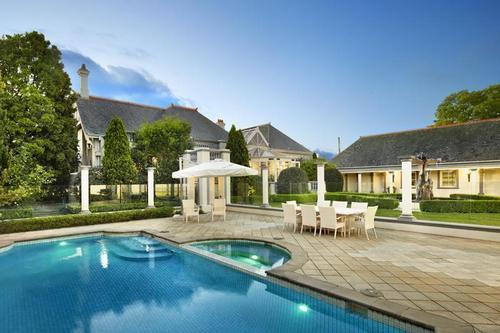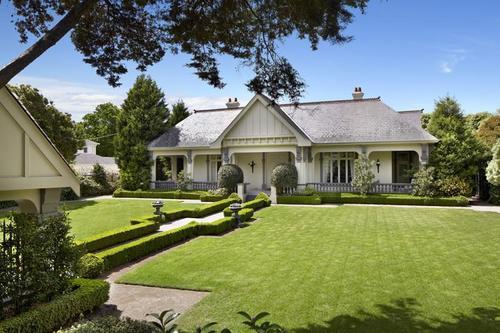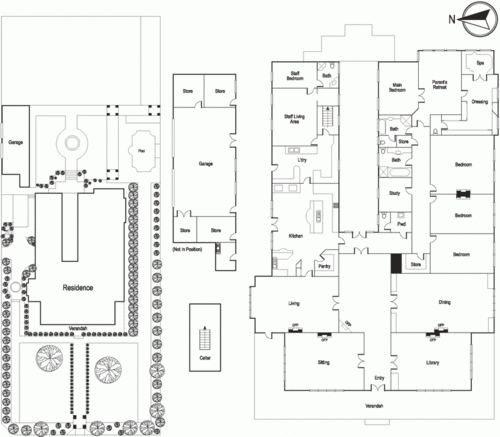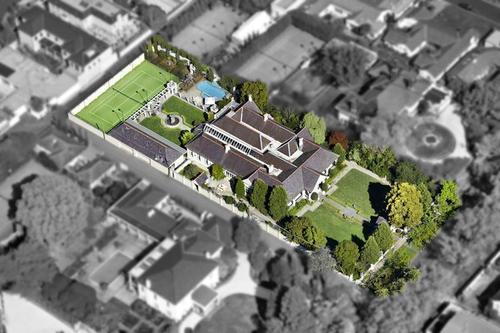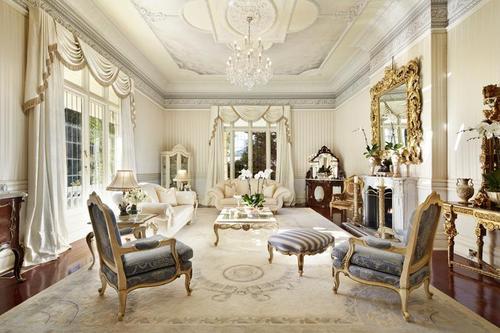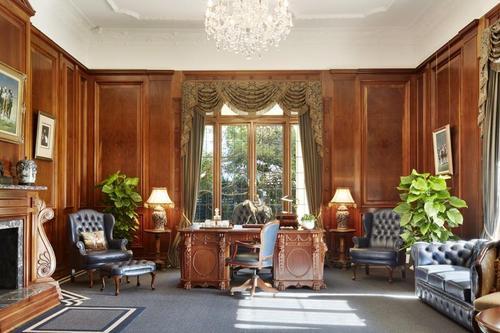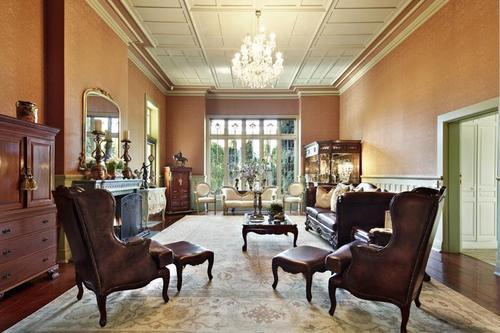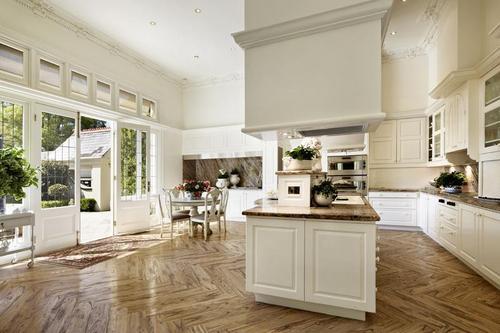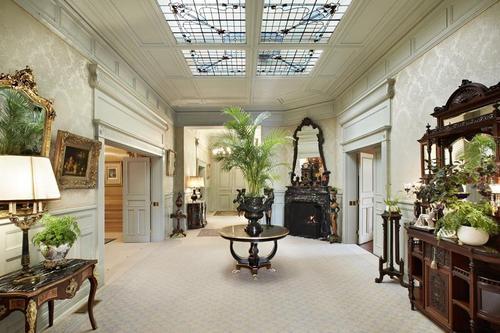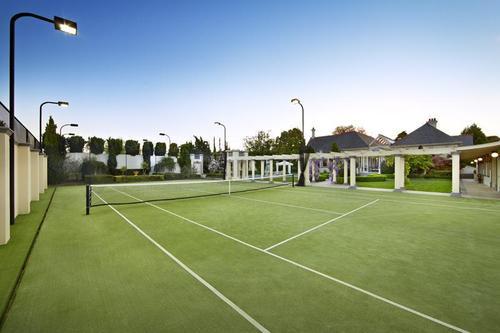Sunnyside, 11 Holbrook Avenue, Kirribilli, NSW
[Previous Post: St Georges Road Mansion, Toorak ...Next Post: ]
- See also Rustic gothic style at Wikipedia

This is not a Federation style house, but the similarities in gabled style are obvious.
- (Victorian) Rustic Gothic style at Wikipedia:
 157 Hotham Street,East Melbourne, Victoria. Completed 1861. |  Greycliffe House, Vaucluse, New South Wales, attributed to John Hilly, circa 1840s. |  Rectory of St Mark's Church, Darling Point, New South Wales. Designed byEdmund Blacket. |  Roslyndale, Woollahra, New South Wales, attributed to Francis Clarke, circa 1856. |
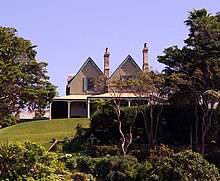 |
| Kirribilli House |
| Sunnyside, Kirribilli |
- Heritage listed by NSW heritage; "A fine example of its type and period."[1]
Table of Contents
- "A picturesque Gothic waterfront house that is a relic of the early waterfront mansion developments of the area in the middle of the nineteenth century.
- "It relates to Kirribilli House nearby, Lindsay, Greycliffe House, Vaucluse House, The Hermitage and others now demolised. Associated with a prominent colonial administrator and a colonial politician. A fine example of its type and period".[2]
- The steep pitch and arrangement of gables to the street, with roofs executed in slate, (constitute) the epic design of these picturesque waterfront houses: 'Kirribilli House' and 'Sunnyside'.[3]
This house was built about 1857 for Robert Hunt, Master of the Royal Mint. Hunt purchased the land from William Maguire in 1861 and shortly afterwards built the original stone portion of the present house.Sunnyside, No. 11 Holbrook Ave, was formerly called Wyreepi.
- He lived here until 1870, and it was then leased out to a succession of occupants until his widow sold the property to the North Shore Steam Ferry Co. Ltd.
- The latter subdivided the land and sold the house and most of the grounds in 1901 to Ward Barrett (a small strip of land was retained for access to the harbour for a ferry wharf). Barrett, described as a comedian, owned the house for 9 years but lived there only till 1905 when the Hon. Dugald Thomson took up residence there and renamed it Wyreepi.

Foreshore view to Sunnyside, about 1908. (North Sydney Heritage Centre, PC 623)
- Dugald Thomson was the representative for Warringah in the NSW Parliament at successive elections in 1895 and 1898. He stood for and won the newly formed Federal seat of North Sydney in 1901. After he retired from parliament in 1910 he continued to live here.
- During this period he added the Victorian style wing on the southern side of the original house.
- Thomson died in 1922 and the grounds of the estate were subdivided.
- The house name reverted to the name ‘Sunnyside’ when, during restoration in 1949, the then owners found that the original bathroom floor was inscribed ‘Sunnyside 1885’in copper studs – the year that water was piped under the Harbour to the North Shore.

$16m-plus for twin of PM's Sydney digs

Lucy Macken
Date September 27, 2013 - 5:53PM[4]Lucy MackenPrestige Property Reporter
View more articles from Lucy MackenFollow Lucy on Twitter Email Lucy
The owners of Sunnyside say their home is better than the more famous Kirribilli House, just around the corner.

Sunnyside, the house in Kirribilli
It's not Kirribilli House, but it's close. Lucy Macken visits the $16 million property.
While it has new tenants, Kirribilli House isn’t for sale.
- However, its waterfront twin 100 metres away is on the market.Sunnyside, on a 1250 square metre block, is a rich person’s alternative to the Prime Minister’s official Sydney base, with no election win required. Just deep pockets: the vendors are looking for $16million-plus.
- ‘‘Our place is much better than Tony’s,’’ say the sandstone mansion’s owners, Eve and John Molyneux.

Sunnyside: vendors are looking for $16 million-plus. Photo: Supplied
‘‘For a start, ours has exposed sandstone walls, whereas Kirribilli House is painted, and we have the ocean pool and the boating facilities,’’ Mr Molyneux said
- The two-storey sandstone mansion was built for Master of the Mint Robert Hunt in 1857, two years after Kirribilli House.
- Before Kirribilli House and its 4000 square metres was acquired by the government at the turn of the century, Sunnyside was the home of Dugald Thomson, the first federal MP for North Sydney.

Sunnyside is located on a 1250 square metre block. Photo: Supplied
The Molyneuxs bought the property in 1971 for $153,500 from Dr Leonard Reuben Rail.
- ‘‘That was a lot of money for us at the time. Some of our friends thought we were mad to pay it,’’ Mr Molyneux said. ‘‘It wasn’t an easy negotiation. He got me on the extra $500.’’
- At the time the property was run down, the roof leaked and neighbours had built a garish red brick house that impinged on the sandstone home’s outlook.
- The roof was quickly fixed, the interiors have had a gracious fit-out by Michael Love, and when the neighbours put their house up for sale in 1998, Mr Molyneux bought it.

The two-storey sandstone mansion was built for Master of the Mint Robert Hunt in 1857, two years after Kirribilli House. Photo: Supplied
‘‘Susan Rothwell said if we buy next door she’d design a house that suited the site better and didn’t jut out over the terrace, so we did,’’ said Mr Molyneux, who paid $2.96million for his Holbrook Avenue neighbour
- That was recouped in 2003, when the less-intrusive designer property sold for $6.1million.
- The heritage-listed Sunnyside shares the same steeply pitched roof, fretwork, French doors and wraparound verandas as Kirribilli House, and a Federation-era extension has added an ornately detailed billiards room. The wet-edged swimming pool was added by the Molyneuxs, as was the Rothwell-designed kitchen and family room.
- Beyond the sandstone terraced gardens, there are the remains of an oceanfront swimming pool, and the boating facilities are now shared with the neighbour.
- ‘‘It’s seen some great parties here, lots of dinner parties, and the house has always been packed on New Year’s Eve,’’ Mr Molyneux said.
- Sunnyside is on offer to expressions of interest until November 21 through Richard Harding and Geoff Smith of L.J.Hooker Mosman.





$16m Kirribilli mansion: Sunnyside for sale
- PRUE MILLER PROPERTY JOURNALIST[5]
- NEWS LIMITED NETWORK
- SEPTEMBER 26, 2013 3:39PM
SUNNYSIDE AT KIRRIBILLI 1:01 Play video
 Prue Miller steps into history with one of Sydney's oldest and most historic private home
Prue Miller steps into history with one of Sydney's oldest and most historic private home

11 Holbrook Ave Kirribilli ONE of the most historically significant properties on Sydney Harbour is about to go on the market, with a price expectation of over $16 million Source: Supplied
ONE of the most historically significant properties on Sydney Harbour is about to go on the market. Expecting to reach more than $16 million, the property known as Sunnyside is just a few hundred metres from what could be it’s twin, Kirribilli House
- The Molyneux family have called 11 Holbrook Ave home for 42 years, finding the sight of a submarine parked at the bottom of Sunnyside’s garden too tantalising a view to resist when they first inspected the home all those years ago.
- The major and most immediate change they instigated was to take off the white paint that covered the beautiful Sydney sandstone walls.
- “In the end they had to blast it off — the whole suburb was covered in sand,” recalled John Molyneux.

11 Holbrook Avenue Kirribilli
Inside changes are more subtle.
- “There was a flower room here, all the homes used to have them back then” said Eve Molyneux during a recent tour of the property. That room was been tastefully, and usefully, converted to a downstairs bathroom.

11 Holbrook Ave Kirribilli
However, much of the home is delightfully original, including many panes of glass in the myriad of windows and doors that overlook the harbour.
- The property was built in the 1850s by the Master of the Royal Mint, Mr Robert Hunt and was later owned for many years by the first Federal Member of Parliament for North Sydney, Mr Dugald Thompson. Mr Thompson was a strong advocate for Australian Federation, and was also a keen billiard play, adding a billiard room to the rear of the home, where even today the fittings for the gas lights can be seen, preserved in the ceiling.

11 Holbrook Ave Kirribilli Source: Supplied
Agent Richard Harding at LJ Hooker Mosman admits it wasn’t an easy listing to secure, but he is excited at the prospect of such a high profile listing of a home he agrees has not only great value, but a soul.
- With royal visits on the calendar in the very near future, one wonders if this home is a castle just waiting for a prince to call it home.
- For more coverage, watch Hot Homes with Prue Miller - Kirribilli Edition

11 Holbrook Ave Kirribilli Source: Supplied
- ^ http://www.environment.nsw.gov.au/heritageapp/ViewHeritageItemDetails.aspx?ID=2180133
- ^ http://www.environment.nsw.gov.au/heritageapp/ViewHeritageItemDetails.aspx?ID=2180133
- ^ http://www.environment.nsw.gov.au/heritageapp/ViewHeritageItemDetails.aspx?ID=2180139
- ^ http://news.domain.com.au/domain/real-estate-news/16mplus-for-twin-of-pms-sydney-digs-20130927-2ujg6.html
- ^ http://www.theaustralian.com.au/news/m-kirribilli-mansion-for-sale/story-e6frg6n6-1226728350356






